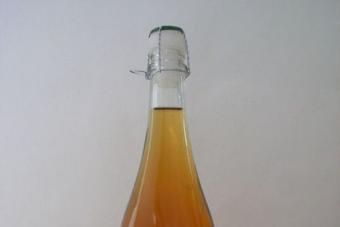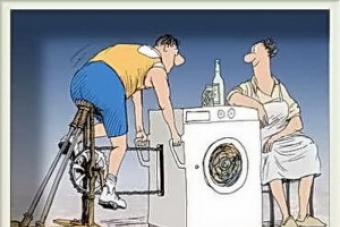Is it possible to give bones to a dog, why they are given, from which farm animals they are suitable, which ones will be optimal, and which ones can be harmful. Let's find out together.
Why are dogs allowed to gnaw bones, are they useful or not?
As a food product, they are ineffective for a dog. They are low-calorie, are absorbed by the body very poorly, most of them domestic dogs are simply not able to digest. Even well-boiled bones are dangerous for the animal. When eaten, they are crushed by the teeth, a large number of them can cause blockage of the intestines. It’s good if you manage with treatment - laxatives, enemas, etc. In case of an unfavorable course, this is an operation. But when acquiring a puppy, many owners immediately have a picture in their head - the dog gnaws a bone. So can dogs be given bones?

It is worth noting that they are suitable for making broth, especially large beef moss. An excellent porridge is then prepared on the broth. These bones have a lot of cartilaginous tissue, collagen fibers, and remnants of meat. This is why dogs love to chew on bones - because of their usefulness - the presence of collagen and cartilage. Usually, in their pure form, these products rarely get to them and instincts work. Dogs love to chew on them. The bone itself remains almost intact. This eliminates known risks.
At what age can a puppy eat a bone?
Can a puppy be given bones? Only veal, namely, the shoulder blade with cartilage, the sternum and pseudoribs. They are rich in chondrin and collagen.
It is recommended to enter into the diet from 3 months. After the start of the process of changing teeth. As the main food they are not suitable. Can be used as a toy with a pleasant taste from 2 months. It is important to ensure that there are no chips on the bones that the pet can get hurt on. The edges should be round and not broken. Problems can arise if the animal eats a small bone. A whole, rounded shape, with the remains of cartilage and ligaments, the bone will benefit the puppy. Especially when teeth change, he will gnaw on it, not furniture.
Older individuals can be given crosses of 1-2 year old bulls or calves.
Which animal bones can and cannot be given?
Let's find out what kind of bones can be given to dogs, and why?
Beef
The bones of old cows are yellowish and have a lot of beef fat on them. The bones of young individuals are white and practically free of fat. Here's what to remember when going to the market. Perfectly fit pseudo-ribs, sternum, shoulder blade. Medium and large breeds are very fond of the ridge. Veal heads can also be attributed to the bones. Boiled, this is a great dish for a dog. Here is the meat of the chewing muscles (cheeks), facial muscles, lips, nostrils, nasal septa (cartilage), brain. It is important to remove the wool after cooking. It separates easily. Do not pluck, but rather roll. Before cooking, cut the head in half along the axis of the skull. Pitching is not recommended - the smell of burning will remain.
Pork
These bones, like the pork itself, are very fatty. In addition, they are porous, because they mainly kill young individuals. Dogs eat such bones almost completely. Is it ok to give a dog pork bones with these characteristics? No. It is worth noting that the pork snout consists of cartilage, muscles and skin. Here it can be given 1-2 times a week raw. Freeze before feeding!

Chicken
Bird bones should not be given to dogs at all. And that's why dogs shouldn't be given chicken bones. They are thin, soft, there is a lot of meat and cartilage left on them, and dogs willingly eat them. If they simply gnaw large beef bones, and leave the bones themselves, then birds can eat in large quantities (necks, wings, skeletons, heads) and completely. This is very harmful and dangerous. The very quality of the bones, like factory broiler chicken, is questionable.
turkey
Turkey bones differ from chicken bones only in size. All recommendations will be the same as for chicken bones.
A rabbit
Rabbit bones are very small and many tubular. As a delicacy, you can give the spine and pelvis to large dogs. Infrequently. The head deserves special attention, most dogs do not eat teeth and leave them.
lamb
These bones, like veal bones, are very good. But you should follow the same precautions as with the rest of the bones for your animal. It is not recommended to take them as the basis of the diet.
Moose, roe deer, wild boar
They must be deeply frozen and then be sure to boil well. The threat of trichinosis is much higher. Given the risks, each owner decides for himself. If you chose them, then follow the same recommendations as described above.
Artificial bones to strengthen and clean teeth - the benefits and harms
Chewable (gelatinous)
They are a safe toy. Puppies willingly gnaw it when changing teeth. Manufacturers produce for specific groups of breeds. But it is not always clear how chewing bones for dogs are made, here you should also choose a manufacturer, with an eye to his reputation. Excessive feeding is fraught with problems of the gastrointestinal tract.
Rubber
They are a simple pet toy like a ball, a rubber pig or a chicken. Great for leisure. When choosing in a store, it is recommended to ask for a certificate of quality and safety of a rubber product. The choice of color and size is up to you.
Pressed from veins (tendons)
The most useful type of artificial bones. They are more expensive, but they are more useful. They contain natural chondrin. It is very useful for puppies and adult animals. It is important not to overfeed the animal with this product. He is very fond of dogs. It becomes one of my favorite treats. The veins in them are treated with steam and crushed before pressing. They are safe, but in large quantities they will become harmful.
Raw bones - useful or not?
These bones contain the most useful substances. Can I give my dog raw bones? - yes, but only pre-frozen. Properly selected bones, as described above, will be useful.

Is it possible to cook mosl, are they digested in a boiled form in the stomach of a dog?
Moslov makes an excellent broth for making porridge from any cereal. But the mosls themselves as food will bring harm. With prolonged cooking, they become porous and can be easily chewed. Only the bone itself will remain, the dog will eat the skewers (roundness at the edges). But the animal will digest such food very poorly. Also, the feces will be with the remnants of bone mass. In the end, everything will end with a blockage and an operation. The nutritional quality of such a diet is very low.
Which breeds of dogs can be fed with bones, and which ones can't?
Small breeds do not have such physical data and bones are contraindicated for them. Such dogs often have problems with their teeth - another reason for minus giving bones. The animal industry produces various artificial options for them. It is very good sometimes to give a pressed appearance from strands of suitable size. Gelatinous ones are less nutritious.
Possible dangerous consequences
The dog, when eating the bones, gnaws them and enough into small pieces. But it is very difficult for the body to digest them. A semi-digested porous mass accumulates. The result is difficult excretion of feces, the appearance of an admixture of blood. If the bones continue to be absorbed in the same amount, then the intestines become clogged. If you turn to the veterinarian in time, you can get by with a deep enema and laxatives. Then you need a strict diet.
If the blockage is so large that it cannot be washed out, or there are several foci, there is only one way out - an operation. Ultrasound will show everything. In a critical case, necrosis of the intestinal wall may occur due to circulatory disorders. This applies to everyone, even dogs of the largest breeds. With a favorable outcome of the operation, rehabilitation lasts a long time.
It is much more dangerous when a sharp piece of bone pierces the intestines or stomach, and sometimes in several places (the intestines are looped). The likelihood of peritonitis is very high. Surgery is inevitable. Treatment will include very powerful antibiotics.
Older dogs may have dental problems. Bones carry a high load for them.
Also, a pet can choke on a piece of bone, but this happens extremely rarely.
What bones do dogs like and why?
sugar brain
These are large, juicy bones of young farm animals. They are white in color, and the bone tissue of the skewers is relatively soft and well saturated with blood vessels. Lots of bone marrow. They are fairly easy to chew on. The amount of cartilage is high and it easily separates from the body of the bone. The porous structure of the skewers is well digested by large dogs and they are not visible in the feces. With constant feeding, problems can arise.
Beef ribs with meat leftovers
The intercostal muscles are very nutritious and palatable. The animals themselves willingly eat the ribs whole (young agricultural animals). This is especially true for pseudo-ribs.
with cartilage
 Cartilage carries a large amount of collagen and chondrin to the dog. It is a building material for joints and tendons. It is useful for growing cheeks, for adults to keep in shape, for the elderly for prevention. All categories love them. Most of the cartilage is on the sternum, pseudoribs (extreme ribs not fused with the sternum), shoulder blades. A lot of cartilaginous tissue in veal heads, pig snout.
Cartilage carries a large amount of collagen and chondrin to the dog. It is a building material for joints and tendons. It is useful for growing cheeks, for adults to keep in shape, for the elderly for prevention. All categories love them. Most of the cartilage is on the sternum, pseudoribs (extreme ribs not fused with the sternum), shoulder blades. A lot of cartilaginous tissue in veal heads, pig snout.
Useful tips for introducing bones into the diet depending on the breed
- Puppies should be given bones from the moment they start changing teeth.
- The bones must be of young agricultural animals and frozen.
- Chips and sharp edges are not allowed.
- Bones are given 2-3 times a week.
- As the basis of the diet, they are not suitable.
- The most useful are breast bone, pseudo-ribs, veal heads (boiled).
- Chicken bones are extremely dangerous (necks are an exception).
- Natural bones are not recommended for small breeds.
- Of the artificial, the most useful of the pressed veins. Gelatinous - just a treat. Rubber - a toy.
- The bones must be fresh, from young farm animals, white in color and without fat.
conclusions
With the right choice of bones, they will benefit the dog. If the above recommendations are not followed, the consequences can be catastrophic. Natural bones are recommended for medium and large breeds, artificial bones for small ones. Bones must be fresh and from young farm animals, deep frozen. The best option is pseudo-ribs, sternum, shoulder blade with cartilage, boiled veal heads chopped along the axis.
Beginning dog owners and experienced kennel owners are wondering if puppies, teens and adult dogs should be given bones? Let's figure out in what form they are safe for a pet and how often they can be offered to pets?
Arguments for
Experienced owners and breeders are unanimous and say that raw bones can and should be given to dogs. Our pets are descended from wolves. They are only 0.02% different in genotype from their older brothers. When wolves pack their prey, for example, a deer, the leader with his female is the first to saturate, and then other members of the pack come up. With pleasure, predators eat meat and entrails, and finally gnaw the bones, bury them. Having feasted for a day, the flock knows that there may not be a large prey for a week.
If you want to treat your pet with bones, remember that you need to give them raw. When cooked, they become brittle and there is a high risk of scratching the stomach or esophagus. In addition, useful substances are digested from the bones, they remain in the broth. You can cook it on the bones, but discard the boiled bones.
The soft bones will not damage the pet. This is how they become when they are extinguished for a long time. For example, small fish or chickens, etc., but they are of little use. It is better to purchase an electric meat grinder, scroll the necks through it and add them to cereals along with vegetables and vitamins.
Give the dog flat beef bones and the more meat on them, the better. Take the moslaki or hip bones after the pet gnaws on the remains of meat and the cartilaginous layer. Boil the broth on them, and discard the bones. If you leave Moslaks to a puppy, he may chew them so hard that he will dislocate his jaw. Better let it gnaw and take it.
Babies can be given lamb or beef spongy bones. Here it is important that it be a calf, a lamb. Then the bones are not too hard. Otherwise, when they break, they have hard edges and can injure the esophagus or stomach.
Consider the arguments why raw bones are good for our pets:

Dogs have a higher acidity in their stomachs than humans because their stomachs are adapted to digest raw bones. It is best to give the bones whole, cutting into the joints, do not crush them.
Arguments against
Unfortunately, bone fragments can accumulate in a pet's stomach or intestines for years. It happens that they stray into a ball, which interferes with the digestion of other food. You will not understand why, but one day a pet may die from a small tubular bone that will pierce his stomach. Bleeding will begin and if you do not urgently take the dog to the doctor, do not perform an operation, he will die.
Remember which bones a pet is strictly forbidden to:

Boil porridge on any bones, except for pork (you can not give pork). Throw out the bones, leave the cartilage.
Important! Pets should not be given boiled necks or spines from any of the birds. They are fragile and break up into many sharp fragments that can injure the esophagus with the pet's stomach.
What else can be consequences after eating bones by a dog? Consider common injuries:
- If the dog swallows a sharp tubular bone, it can scratch the mucous membranes and even pierce the throat. There will be heavy bleeding.
- If, when swallowing a bone, it damages the trachea, this can be fatal for the dog. There were cases that the owners even immediately took the pet to the veterinarian, but he lost too much blood or choked and died in their arms.
- Asphyxia. If a small bone gets stuck between the teeth, the dog will reflexively release a lot of saliva. There were cases when pets choked on their own liquid. If you do not notice what is happening to the dog and do not pull out the stuck bone, he will die from suffocation. Often the spine of a turkey, goose, duck will get stuck in this way and the dog dies from suffocation.
- Is your pet vomiting? Take him to the vet immediately. This could be a sign that he has a rather large piece of bone stuck in his stomach. Reflex desire to remove it from the stomach along with the vomit, but unfortunately it is too large and does not go away. The pet becomes dehydrated after frequent vomiting. You can pull out the bone only by operating on your pet.
- Bones, along with fragments, can accumulate in the stomach and clog it. Many stray dogs die from this. They do not eat properly and the acidity of the gastric juice in their stomachs drops. Bones do not dissolve and are not excreted from the body naturally through the intestines. "Lump with needles" clogs the stomach and requires surgery. The dog will die from internal bleeding or obstruction. The veterinarian can open the intestines, get bones with fragments, but then the dog will have a long rehabilitation period.
- It happens that the large intestine is clogged. This happens when bones in a semi-digested form accumulate in the large intestine, forming a kind of plug. Your dog will feel pain while defecating. This may be accompanied by bleeding. Veterinarians note that in those dogs that are often fed any bones, there is just such a blockage in the intestines.
Bones contain a lot of calcium and phosphorus. They are digested well in raw form, digested by gastric juice. There are no other nutrients. Cartilage is more useful in its raw form, but they can also be given boiled with buckwheat, rice, oatmeal porridge (others are less useful).
If you want to treat your pet with tasty and nutritious bones, then buy those with more meat and offer them only raw. Boiled it can be chicken necks twisted in an electric meat grinder or very soft from rabbit or chicken, etc. stew. Boiled tubular bones are strictly forbidden for dogs.
 Choosing a puppy: selection criteria
Choosing a puppy: selection criteria
 All about castration
All about castration  Which clipper to choose
Which clipper to choose
 Agility - sport with your pet
Agility - sport with your pet

 How to choose a shampoo
How to choose a shampoo
For non-dog lovers, the question sounds crazy. The question itself is not clear. After all, most people are sure that dogs are fed with bones.
So can dogs have bones? Yes and no. Let's see which are possible and which are not.
boiled bones: beef, pork, chicken, and indeed any. It is impossible any, to anybody and never. Surprised? I explain. Boiled bones in the intestines fall into a very dense mass and clog the intestines. The most terrible cases are when they fed bones from jelly. Bones from jelly are boiled for a long time, become soft, and the owners with a dear soul feed all these boiled bones to the dog. Well, do not disappear the same product. And there is not even a doubt that at this moment they are doing something bad, or something wrong. Sometimes you are lucky, the dog ate a little, and then with difficulty, but she pooped herself. If you ate decently - expect trouble.
At best, you will get off with a slight fright: vaseline oil inside and an enema. In the worst case, surgery (the stomach is cut, the intestines are cut, the bones are removed from the intestine) plus postoperative care: droppers, injections, etc.
Do you still feel sorry for throwing away the bones from the jelly? Many dog owners have already seen for themselves: such “savings” are very expensive.
Throw away these bones with a clear conscience away from sin!
Raw pork bones. We don't give.
We don't give pork at all. Raw pork - the risk of infection with various worms: pork tapeworm (Taenia solium), Trichinosis (Trichinellosis), Echinococcosis (Echinococcosis), etc. Yes, and boiled pork is too fatty for dogs.
Raw beef bones.
And now we have finally reached those bones that dogs can. Raw beef bones.
It is possible, but not all.
You can give meat to be gnawed from moslov (from large femurs of a cow). And nibble the meat off the ribs. If the veal ribs are young, in the cartilage stage, they can be eaten. If the beef ribs are already hard in the bone stage, such bones can be given to puppies, but it must be followed: when the puppy nibbles the meat from them, the bone itself must be taken away and thrown away. It is better not to give beef ribs to an adult dog. Before you have time to look back, she has already gnawed them and swallowed them. And when the ribs are chewed, sharp fragments are obtained. What it is fraught with - see above. Veal cartilage ribs can be used by an adult dog.
But! Chewing is good for dogs. And for the teeth, and for the gums, and just something to do.
In addition to dry food, you can give the dog to gnaw:
Dried tripe, dried tracheas, dried penises. It stinks terribly, but almost all dogs like it.
Now pet stores sell dried deer legs. And if you are not a supporter of the exotic, at your service are all kinds of sticks-bones "dentastix" from various manufacturers. Various sizes, shapes and textures.
Take care of yourself and your pets!
A thoughtful and well-designed diet has a direct impact on the health of a four-legged pet. From the question: is it possible to feed dogs a bone? some are horrified, because they believe that it is harmful to the animal, while others, on the contrary, are sure that the pet menu should not do without them.
What is the right thing to do in the case when it is not clear whether it is possible to feed a dog with beef bones, and also what benefit or harm they will bring to a pet?
Your dog's natural diet should include solid foods. You can give her bones, but you need to do it very carefully and correctly.
Beef bones are allowed to be offered to dogs. It is best if these are large heads of the hip joints. Wait until the animal eats cartilage and meat, then immediately take the moslak from him. Spongy can be used as raw material for broth, or as a toy.

Be sure to specify at what age the animal was killed, whose bones you plan to feed your dog. If young, then they can be fed to a pet without fear.
Because the older the animal was, the harder its spongy substances become, which can break down and harm the dog while eating.
Benefit
The benefit lies in the fact that with them calcium, minerals, chondroitin and collagen enter the body.
- Thanks to them, chewing muscles are trained, but only if they are given no more than two or three times a week. Daily use leads to excessive stress.
- If you add the product to the diet in reasonable quantities, then the appearance of tartar and plaque will not threaten the teeth.
- The spongy substance, bone marrow, which are part of the bones, are of great benefit to the dog's body, filling it with saturated and unsaturated fats.
- Nervousness is reduced in those pets who sometimes have the opportunity to gnaw bones, in contrast to those who are deprived of this pleasure.
Harm
Unfortunately, the bones are not only harmful, but also endanger the health and life of a four-legged pet.
- From them, dogs' teeth grind down, and sometimes even break. Bad teeth deprive dogs of the opportunity to fully eat, which also leads to various diseases, but already in the gastrointestinal tract.
- The mucous membrane of the intestines, stomach and esophagus will be damaged by fragments of crushed bones.
- Very often they get stuck in the throat. Not always the owner can pull it out on their own, without the intervention of a doctor.
- One common problem is intestinal blockage. In this case, too, there is no way to do without surgical intervention.
Who can't?

Dogs fed commercial diets should not be fed bones. The acidity in their stomachs is altered so they cannot be digested, which usually results in vomiting. The health and life of the animal in this case is endangered.
If your pet eats a mixed diet and dry food alternates with canned food and meat in his diet, then in this case bones should not be given to him either.
Pets who suffer from diseases of the gastrointestinal tract and take the drug omez, this type of product in the diet is contraindicated.
Pregnant females who are fed raw foods are not allowed to give bones in the last weeks of pregnancy.
During the period when mothers begin weaning their puppies, bones should be completely excluded from their diet.
Which ones are better?
Not all beef bones are allowed to be given to dogs. Cartilage, young veal ribs, mosol with leftover meat are the safest for them.
Boiled or raw?
It is allowed to give them to the dog only in raw form.
Attention! In no case should you offer boiled beef bones to your dog! In a boiled form, when they enter the intestines, they create a fairly dense mass that cannot go outside.
In a baked and fried form, the product is also strictly prohibited, because dogs cannot digest it.
How to give?
It will be correct to add the bone to the composition of a serving of food, or after eating. It is absolutely impossible to feed them to a dog on a daily basis. It is recommended to pamper your pet with this product no more than twice a week.
What to do if you ate?

Asphyxia, which often happens to dogs from eating bones, is very life threatening. When the bone gets stuck in the teeth, the dog begins to salivate profusely. Often, pets choke on their own saliva.
It is very important at such a moment that the owner can notice in time that the dog has become ill and pull out the bone. If the moment is missed, then there is a high probability that the dog will die from suffocation.
Vomit
If your four-legged friend starts vomiting, then immediately take him to the veterinary clinic. Such a reaction of the body indicates that most likely a large piece is stuck in the stomach, which does not pass. Frequent vomiting dehydrates the body of the animal. Only surgery in this case can save your pet.
Diarrhea with blood
Dogs that are fed bones too often develop blockages in their large intestines. This leads to pain and bleeding during bowel movements. If you notice such an ailment in your dog, then you must urgently show it to a veterinarian.
Puppies
After two months from the moment of birth, puppies are allowed to very rarely indulge in a delicious bone.
Reference! In order to avoid many serious problems, do not leave the baby alone with the bone. Make sure that he does not start to gnaw and swallow it.
A puppy can only be given bones in the form of cartilaginous veal ribs. With their milk teeth, they gnaw out the spongy substance that is useful for them, eat cartilage and tendons.
If you decide to give the baby beef callus, then it should be so large that the puppy cannot swallow it.

The bone must be intact and without chips. Naked, without the remains of meat, it is forbidden to give babies.
The product must be necessarily fresh and get into the puppy's food only in its raw form.
Breed features
Dogs of any breed and any age will benefit from beef bones in reasonable quantities and under the strict guidance of the owner.
For large breed dogs, avoid large beef bones such as thighs and drumsticks.
On the contrary, it is better for small dogs to gnaw on a large brain, because their jaw will not be able to grasp and bite through it.
Conclusion
It is best to feed your dog only high quality foods that will only benefit his health. Bones can not always be attributed to useful products, although dogs love them very much. Often they bring harm and death to the animal.
If you still decide to sometimes treat your pet with a bone, then approach the process seriously and responsibly. Choose the safest and most special treats available in pet stores. Remember that you are responsible for your little friend and take care of his health.
In contact with
There is an undeniable rule, written at the cost of hundreds of lives, that you should not give chicken bones to dogs! However, the bitter experience of owners who have lost their pets does not affect very many four-legged lovers. A loving owner "spoils" the dog, harming the health of the ward and refuses to admit it. The situation is egregious, but as practice shows, harm to a beloved pet is done out of ignorance, which, however, does not beg responsibility for what has been done.
Never, under any circumstances, give your dog the tubular bones of a chicken or any other bird! If you want to see for yourself the danger of such a delicacy, hit the bone from the chicken leg with a chop hammer, and then try with your finger how sharp the fragments are. Chicken bones are dangerous for dogs, if your pet is lucky, he will only suffer from intestinal obstruction, but the result can be fatal! Of the possible consequences of eating bird bones, we can distinguish:
- Oral injuries, chipped teeth, pulpitis These are the minimal negative effects. The oral mucosa usually recovers in 12-24 hours. Pulpitis leads to a severe pain syndrome and can result in the loss of both the patient and the teeth growing nearby.
- Injuries of the pharynx and trachea- leads to acute pain, and with tissue perforation, to severe bleeding. If the dog is not taken to the veterinarian on time, injury can result in death due to suffocation or blood loss.
- Perforation of the stomach or intestines- leads to bleeding, with severe perforation - to the outflow of gastric or fecal masses into the abdominal cavity. An extremely dangerous condition leading to sepsis and death of the animal. The only chance for salvation is an emergency operation.
- Perforation or blockage of the colon- consequences from obstruction of the digestive tract and swelling of the peritoneum, to death from intoxication or profuse bleeding. With the formation of a cork in the large intestine, treatment begins with oil enemas. If the condition does not improve, the dog is operated on. When the intestine is perforated, an urgent operation is performed, dead tissues are excised, and healthy ones are sutured.
Important! If you know that the dog has eaten chicken bones, be sure to monitor its condition, or better, take the pet to the veterinary clinic! The consequences of perforation of the intestine or stomach may not appear immediately.
Bird Bones Acceptable for Inclusion in a Dog's Diet
If you get acquainted with the cynological manuals of the times of the USSR, you can find a recommendation about feeding whole carcasses of a bird to a dog. We will not dispute the experience of experts, but today such recommendations are not relevant for a number of reasons. However, this does not mean that chicken should not be present in the dog's diet. Acceptable uses for chicken meat include:
- Cooking broth on chicken carcasses, if the bones are removed before adding the porridge and vegetables. By the way, chicken skin is considered a more negative ingredient for broth, especially if you buy a factory-made bird.
- Chicken cartilage added to porridge during cooking.
- Raw chicken necks, slaughtered to the state of minced meat.
- All poultry offal except heads and paws.

Important! Even permitted poultry products should not be fed naturally to pointing dogs. The working dog must not associate the bird with food or it will spoil the carcasses during service.
Consequences of eating chicken bones by a dog and first aid
So we found out that You can't feed a dog chicken bones for its own good. But what if the pet did not ask permission? For example, a dog swallowed a chicken bone found on the street or in a trash can. Naturally, this is a matter of upbringing and self-control of the pet, but its consequences can be very unpleasant.
Important! Boiled tubular and vertebral bones of a bird are of particular danger. When cracked, heat-treated bones break up into small and sharp fragments that can be compared to crushed glass.

Read also: Hygiene belt for male dogs - salvation from tag problems
The first thing to be accepted as an axiom is the relevance of sanity. Even if a dog ate a chicken bone, it is far from certain that the pet will have to be saved. If the ward is young and healthy, gastric juice is likely to change the structure of the bone, after which it will come out naturally. Further, for unknown reasons, many owners in a panic give the dogs a bowel lavage. In fact, when eating bones, the procedure is not only useless, but also dangerous. So, the dog was already worried and ate a ribbed chicken bone and you know about it. Your actions should be as follows:
- Watch your dog's behavior- lethargy and whining, these are bad signs.
- Drink the ward 1-4 tablespoons (depending on size) of vegetable or linseed oil. The oil envelops the walls of the stomach and intestines, which contributes to the rapid removal of feces and simplifies the transportation of bones through the digestive tract.
Important! The only case in which conservative assistance is relevant is a blockage of the large intestine with a plug of compressed bones. Most often, this problem can be solved by introducing oil into the intestine. However, do not be presumptuous, this diagnosis is not made “by eye”.
- Examine the mucous membranes of the mouth- normally, they should be pink or dark, but not gray or bluish. Pallor of the mucous membranes may indicate poisoning (if the dog picked up a bone on the street) or blood loss.
- Examine the mucous membranes of the eyes and pupils- with pain syndrome, the dog's pupils become narrower and react poorly to darkening in the room (slowly or not completely expanding).





